Do you have a question about the ZyXEL Communications UAG5100 and is the answer not in the manual?
Provides an overview of the UAG series models and its capabilities as a comprehensive service gateway.
Details the default configurations for zones, interfaces, and ports on UAG2100/UAG4100 and UAG5100 models.
Explains the different ways to manage the UAG, including Web Configurator and Command-Line Interface (CLI).
Describes the prerequisites for using the Web Configurator, including browser requirements and settings.
Provides step-by-step instructions on how to access and log into the UAG's Web Configurator.
Introduces the main components of the Web Configurator screen, such as title bar, navigation panel, and main window.
Explains how to use the navigation panel menus to open status and configuration screens.
Describes the flexibility of Web Configurator tables and lists for displaying and sorting entries.
Provides instructions on the proper procedure for shutting down the UAG to prevent firmware corruption.
Details the steps for mounting the UAG5100 on a standard 19-inch rack or in a wiring closet.
Provides instructions for mounting the UAG2100 and UAG4100 on a wall, including drilling and screw placement.
Introduces the front panel of the UAG, detailing its components and indicators.
Describes the status and meaning of the Power (PWR) and System (SYS) LEDs on the front panel.
Illustrates the rear panel of the UAG2100 or UAG4100, highlighting ports and features.
Explains how to set up an external statement printer (SP350E) and deploy it with the UAG.
Provides steps to connect the printer's Ethernet port to the UAG's LAN port and power it on.
Guides on connecting the UAG's WAN port to a broadband modem and accessing the web configurator.
Details how to find the printer's IP address from the DHCP table and add it to the UAG's printer list.
Explains how to enable web authentication to require users to log in before accessing the network.
Describes how to create dynamic guest accounts using the account generator based on billing settings.
Introduces the Installation Setup Wizard, which guides users through initial Internet, wireless, and web authentication configuration.
Explains how to set the WAN interface's encapsulation type and IP address assignment method.
Details the configuration of Ethernet encapsulation, IP address, subnet mask, and gateway settings.
Covers PPPoE specific settings including service name, authentication type, user name, and password.
Outlines PPTP specific configuration parameters like authentication type, user name, and password.
Describes how to configure a second WAN interface if the UAG has multiple WAN interfaces.
Explains how to enable the controller feature and manage connected APs.
Details wireless and security settings, including SSID, security mode, and radio band configuration.
Guides on enabling web authentication to block LAN2 traffic until client authentication.
Explains how to configure printer settings, including enabling dynamic guest accounts via statement printer.
Covers the configuration of general billing settings, such as accounting method and currency.
Describes how to configure billing profiles that define maximum Internet access time and charges.
Explains how to select pre-defined billing profiles for automatically creating dynamic guest accounts.
Details the configuration of free time settings for guest accounts.
Provides instructions on registering the UAG with myZyXEL.com using its serial number and LAN MAC address.
Introduces the quick setup wizards for configuring Internet and VPN connection settings.
Guides users through configuring an interface to connect to the Internet.
Explains how to select the Ethernet interface for configuring a WAN connection.
Details how to select the WAN type, choosing between Ethernet, PPPoE, or PPTP.
Explains how to select whether the interface uses a fixed or dynamic IP address.
Guides users to enter Internet access information for PPTP or PPPoE connections.
Displays a summary of the WAN interface settings after configuration.
Introduces the VPN setup wizard for creating Virtual Private Network (VPN) rules.
Explains the VPN wizard's purpose and the resulting Phase 1 and Phase 2 rule settings.
Allows selection between Express or Advanced wizards for VPN rule creation.
Guides the user to select the VPN scenario, such as Site-to-site.
Details the configuration steps for the VPN Express Wizard, including secure gateway and pre-shared key.
Provides a read-only summary of the VPN tunnel's configuration and commands.
Confirms the completion of the VPN Express wizard and directs users to the Phase 1 and Phase 2 rule settings.
Allows selection of the VPN scenario for the Advanced Wizard configuration.
Details Phase 1 negotiation settings for IKE SA, including secure gateway and encryption algorithms.
Covers Phase 2 settings for IPSec SA, including active protocol, encapsulation, and encryption algorithms.
Provides a read-only summary of the VPN tunnel settings for the Advanced Wizard.
Confirms the completion of the VPN Advanced Wizard and directs users to Phase 1 and Phase 2 rule settings.
Explains how to use the Dashboard screens to check status information about the UAG.
Lists the functionalities available in the Dashboard screens for monitoring device information and status.
Describes the Dashboard screen, which displays general device information and status in rearrangeable widgets.
Explains how to use the Monitor screens to check status and statistics information on the UAG.
Lists the various Monitor screens available for checking packet statistics, interface status, and traffic information.
Displays packet statistics for each Gigabit Ethernet port, allowing detailed analysis.
Shows a line graph of packet statistics for each physical port, providing visual data representation.
Lists all UAG interfaces and provides packet statistics for each.
Provides basic traffic information, including visited web sites, protocols used, and LAN traffic.
Displays information about all established sessions for debugging or statistical analysis.
Shows the status of the UAG’s Dynamic DNS (DDNS) domain names.
Lists devices that have received IP addresses from UAG interfaces with IP/MAC binding enabled.
Displays a list of users currently logged into the UAG.
Provides information on dynamic guest accounts, which are automatically generated for guest users.
Lists NAT port mapping rules that UPnP creates on the UAG.
Displays information about a connected USB storage device.
Allows viewing the UAG’s neighboring devices discovered via Link Layer Discovery Protocol (LLDP).
Shows which APs are currently connected to the UAG.
Provides station statistics for connected APs, showing station count over time.
Displays statistics about wireless radio transmitters in each connected AP.
Allows viewing detailed information about a selected radio's SSID, wireless traffic, and clients.
Provides statistics pertaining to associated stations (wireless clients).
Displays information about wireless devices detected by the AP.
Displays information about the connected statement printer, including its status.
Shows the status of active users to whom the UAG applied a VPN 1-1 mapping rule.
Displays statistics for each of the VPN 1-1 mapping rules.
Allows display and management of active IPSec SAs.
Explains how to use regular expressions for searching IPSec SAs.
Provides statistics on Application Patrol based on profiles bound to Security Policy profiles.
Displays content filter statistics, including web request and category hit summaries.
Allows viewing and managing log messages, including filtering and e-mailing options.
Enables viewing the UAG's current wireless AP log messages.
Allows viewing the UAG's dynamic guest account log messages.
Explains how to register the UAG and manage its service subscriptions via myZyXEL.com.
Details using Registration, Service, and Signature Update screens for license management.
Provides background information on myZyXEL.com and available subscription services.
Guides users to register their UAG with myZyXEL.com.
Displays the status of service registrations and allows activation or extension of licenses.
Explains how to update application patrol signatures periodically.
Explains how to configure the UAG to manage connected Access Points (APs).
Lists functionalities for managing APs: Controller, AP Management, MON Mode, Load Balancing, DCS, and Auto Healing.
Defines key terms and concepts related to wireless networking, including Station, DCS, and Load Balancing.
Sets how the UAG allows new APs to connect to the network.
Allows management of all APs connected to the UAG, including editing properties and rebooting.
Enables editing of AP properties, including radio settings, VLAN, and port settings.
Allows enabling or disabling ports on managed APs and configuring port PVID.
Facilitates creating new VLANs or configuring existing VLANs on the UAG.
Configures the AP controller's IP address and the action managed APs take if the controller fails.
Allows assigning APs to either the rogue AP list or the friendly AP list.
Enables adding or editing APs in the rogue or friendly lists.
Configures wireless network traffic load balancing between APs.
Explains AP responses to overload: delaying connections or kicking off clients.
Configures Dynamic Channel Selection (DCS) for managed APs to find less-used channels.
Enables the auto healing feature to extend wireless coverage when an AP fails.
Provides additional technical information on wireless features.
Explains dynamic channel selection to avoid radio interference and improve wireless performance.
Discusses wireless load balancing types: by station number and by traffic level.
Introduces UAG interfaces, ports, and zones used for security policy configuration.
Lists functionalities for configuring port roles, Ethernet, PPP, VLAN, Bridge, Virtual, and Trunk interfaces.
Explains general interface characteristics, including logical entities, binding to ports, and zone assignment.
Allows setting UAG's flexible ports as part of LAN1, LAN2, or DMZ interfaces.
Lists every Ethernet interface and virtual interface created on top of Ethernet interfaces.
Enables configuration of IP address assignment, interface parameters, DHCP, connectivity check, and MAC address settings.
Explains how to use the Object Reference screen to view configuration settings that reference a selected object.
Allows adding DHCP extended options to provide more information in DHCP packets.
Explains the use of PPPoE/PPTP interfaces for ISP connections without installing separate software.
Lists every PPPoE/PPTP interface for configuration.
Allows configuration of PPPoE or PPTP interfaces, requiring a prior ISP account setup.
Describes how VLANs divide a physical network into multiple logical networks based on IEEE 802.1q.
Lists every VLAN interface and virtual interface created on top of VLAN interfaces.
Enables configuration of IP address assignment, bandwidth parameters, DHCP, and connectivity check for VLAN interfaces.
Introduces bridge interfaces and explains screens for their configuration.
Provides a summary of all bridge interfaces and virtual interfaces created on top of them.
Allows configuration of IP address assignment, bandwidth parameters, DHCP, and connectivity check for bridge interfaces.
Explains how virtual interfaces are used to tell the UAG where to route packets.
Enables configuration of IP address assignment and interface parameters for virtual interfaces.
Provides detailed technical information about interfaces on the UAG.
Explains the use of trunks for WAN traffic load balancing to increase network throughput and reliability.
Covers configuring trunk summary, adding trunks, and configuring the system default trunk.
Provides key concepts about adding WAN interfaces to trunks and using policy routing with trunks.
Lists configured trunks and the load balancing algorithm each trunk uses.
Guides on creating or editing a WAN trunk entry, including load balancing algorithms and member interfaces.
Details how to change the load balancing algorithm and view bandwidth allocations for the system default trunk.
Explains how to use policy routes and static routes to override default routing behavior.
Covers using Policy Route and Static Route screens for configuration.
Defines Policy Routing and contrasts it with Static Routes.
Allows viewing and configuring policy routes based on matching criteria and actions.
Guides on configuring or editing a policy route, including criteria and actions.
Displays configured static routes for propagating routing information to other routers.
Allows configuration or editing of static routes.
Provides detailed information about features configurable in policy routing, like NAT and DiffServ.
Explains Dynamic DNS (DDNS) services for using domain names with dynamic IP addresses.
Covers using DDNS screens to view, add, or edit configured DDNS domain names.
Explains how DNS maps domain names to IP addresses and the requirements for Dynamic DNS.
Provides a summary of all DDNS domain names and their configurations, allowing addition, editing, and deletion.
Allows adding a domain name to the UAG or editing existing configurations.
Explains Network Address Translation (NAT) for making private network computers available outside the network.
Covers using NAT screens to view, manage, create, edit, and delete NAT rules.
Defines NAT as virtual server, port forwarding, or port translation.
Provides a summary of all NAT rules and their configurations, allowing creation, editing, and deletion.
Lets users create new NAT rules or edit existing ones.
Provides detailed information about NAT on the UAG, including NAT Loopback.
Explains VPN 1-1 mapping for accessing the Internet or external servers with unique public IP addresses.
Covers enabling and configuring VPN 1-1 mapping and pool profiles.
Discusses VPN 1-1 Mapping, Security Policy, and Policy Route relationships.
Provides a summary of VPN 1-1 mapping rules, allowing creation, editing, and deletion.
Allows configuration of VPN 1-1 mapping rules.
Summarizes all pool profiles for VPN 1-1 mapping and their configurations.
Explains how HTTP redirect forwards client HTTP requests to a web proxy server.
Covers using HTTP Redirect screens to display and edit redirect rules.
Defines Web Proxy Server functionality and its role in network security.
Displays a summary of HTTP redirect rules and allows configuration.
Allows configuration of HTTP redirect rules.
Explains how SMTP redirect forwards authenticated client SMTP messages to a SMTP server.
Covers using SMTP Redirect screens to display and edit redirect rules.
Defines Simple Mail Transfer Protocol (SMTP) and its role in email transport.
Displays a summary of SMTP redirect rules and allows configuration.
Allows configuration of SMTP redirect rules.
Explains Application Layer Gateway (ALG) functionality for applications operating through UAG NAT.
Covers using the ALG screen to set up FTP ALG settings.
Discusses ALG, NAT, and Security Policy interactions.
Highlights prerequisites: configuring security policies and enabling NAT for WAN-initiated sessions.
Allows turning the ALG off or on, and configuring port numbers.
Explains UPnP and NAT-PMP support for network device discovery and connection.
Describes how UPnP hardware is identified and accessed in Windows XP Network Connections.
Explains UPnP NAT traversal, which automates network addressing and presence announcement.
Allows enabling UPnP and NAT-PMP on the UAG.
Provides examples of using UPnP, including in Windows XP and accessing the Web Configurator.
Demonstrates using the UPnP feature in Windows XP, requiring UPnP installation and activation.
Guides on auto-discovering UPnP-enabled network devices via Network Connections.
Explains accessing the Web Configurator via UPnP without needing to find the UAG's IP address first.
Explains IP to MAC address binding to ensure intended devices use privileged IP addresses.
Covers binding IP to MAC addresses using Summary and Edit screens, and configuring exempt lists.
States that IP/MAC address bindings are based on UAG's dynamic and static DHCP entries.
Lists the total number of IP to MAC address bindings for devices connected to each supported interface.
Allows configuring an interface's IP to MAC address binding settings.
Enables adding or configuring a static DHCP entry.
Configures ranges of IP addresses to which the UAG does not apply IP/MAC binding.
Explains Layer-2 isolation for preventing device communication, except for whitelisted devices.
Covers enabling layer-2 isolation and configuring the white list.
Allows enabling Layer-2 isolation on the UAG and specific internal interfaces.
Blocks IP addresses not in the white list from communicating on layer-2 isolation-enabled interfaces.
Enables creating or editing white list rules for Layer 2 isolation.
Explains IP Plug and Play (IPnP) feature allowing Internet access without changing network settings.
Covers enabling IPnP on the UAG and internal interfaces using the IP screen.
Allows enabling IPnP on the UAG and specific internal interfaces.
Explains web authentication for intercepting network traffic until user authentication.
Covers enabling web authentication, setting logout IP, managing policies, and customizing portal/agreement files.
Discusses Forced User Authentication and finding out more about user-aware access control.
Guides users to display the Web Authentication General screen for settings and policies.
Displays general web portal settings and authentication policies, enabling web authentication.
Illustrates configuring policies and security settings for user-aware access control with RADIUS.
Allows viewing, creating, and managing authentication type profiles for web authentication.
Enables uploading custom web portal or user agreement files to the UAG.
Allows defining web site addresses that users can access without logging in.
Turns on the walled garden feature, which works with web portal authentication type.
Configures walled garden web addresses (URLs) for sites accessible without logging in.
Configures walled garden web site links using wildcard domain names or IP addresses.
Shows the user login screen with two walled garden links for demonstration.
Sets the UAG to display an advertisement web page as the first page when a user connects to the Internet.
Configures an advertisement address entry, allowing up to 20 URL entries.
Explains how Ekahau RTLS tracks Wi-Fi tags attached to APs managed by the UAG.
Covers using the RTLS screen to track the location of Ekahau Wi-Fi tags.
Lists the prerequisites for configuring RTLS, including number of APs and IP addresses.
Guides on turning RTLS on/off and specifying the IP address and server port of the Ekahau RTLS Controller.
Defines security policy as a template for applying security settings to specific traffic at specific times.
Covers enabling/disabling policy control, asymmetrical routes, and session limits.
Explains Stateful Inspection, Zones, Default Security Policy Behavior, and To-Device Rules.
Allows enabling/disabling policy control and asymmetrical routes, and setting session limits.
Guides on configuring the security policy control screen, including enabling policy control and allowing asymmetrical routes.
Allows creating or editing a policy control rule, defining criteria and actions.
Limits the number of concurrent NAT/security policy sessions a client can use.
Configures rules to define session limits for specific users or addresses.
Provides an example of configuring an Internet security policy to allow Doom players access.
Demonstrates blocking LAN users from IRC traffic and allowing CEO access.
Explains how to set up billing profiles, charge users, and configure accounting methods.
Covers configuring general billing, billing profiles, discounts, and payment services.
Defines Accumulation and Time-to-finish accounting methods.
Configures general billing settings, including accounting method, currency, and SSID profiles.
Configures billing profiles defining maximum Internet access time and charge per time unit.
Allows automatic creation of dynamic guest accounts using billing profiles.
Enables sending SMS messages for certain accounts and querying account information.
Allows creation or editing of billing profiles.
Enables configuration of custom discount pricing plans for reduced rates.
Allows creation or editing of discount levels.
Configures credit card service for authorizing and processing online payments.
Customizes online payment service pages for desktop and mobile versions.
Explains creating dynamic guest accounts and printing information using an external statement printer.
Covers configuring printer list, printout customization, and printer management.
Configures printer list and allows UAG to monitor printer status.
Allows adding or modifying printer settings, including IP address and description.
Customizes the account printout format, allowing upload of custom formats.
Manages and views information about connected statement printers.
Modifies printer nickname and IP address settings.
Explains how to print status reports for guest accounts and system information.
Lists the key combinations required to print specific reports on the SP350E.
Details the daily account report, including total accounts and charges for the current day.
Describes the monthly account report, listing accounts printed in the current month.
Provides notes on account report limitations, such as the maximum number of entries.
Displays current system information like host name and WAN IP address.
Explains how Free Time allows creating dynamic guest accounts for temporary Internet access.
Covers turning on the Free Time feature to allow users free Internet surfing for a specified period.
Allows enabling and configuring free time settings, including period, reset time, and delivery method.
Explains SMS support for sending text messages to mobile devices using ViaNett as the gateway.
Covers turning on the SMS service on the UAG using the SMS screen.
Enables SMS for sending dynamic guest account information via text messages.
Explains VPN for secure communications using tunneling, encryption, and authentication.
Covers VPN connection screens for specifying gateways and devices, and managing VPN gateways.
Explains IPSec VPN tunnel establishment phases, IKE SA, IPSec SA, and related topics.
Provides suggestions for setting up VPN tunnels, including address objects, interfaces, and AAA servers.
Lists VPN connection policies, associated gateways, and various settings, allowing activation/deactivation.
Allows creating or editing a new VPN connection policy.
Displays IPSec VPN gateway policies, UAG address, remote IPSec router address, and associated VPN connections.
Allows creating or editing a new VPN gateway policy.
Provides detailed background information on IPSec VPN, including IKE SA, proposals, and negotiation modes.
Introduces the key components of an IPSec SA.
Explains how to specify IP addresses for the UAG and remote IPSec router for IKE SA setup.
Describes the IKE SA proposal for identifying encryption algorithm, authentication algorithm, and DH key group.
Explains how VPN, NAT, and NAT Traversal interact.
Discusses extended authentication used when multiple IPSec routers use the same VPN tunnel.
Explains bandwidth management for controlling service usage and prioritizing delay-sensitive applications.
Covers using BWM screens to control bandwidth and identify refining conditions.
Discusses restricting bandwidth usage, policy routes, and security policy interactions.
Describes supported bandwidth management types: Shared, Per user, and Per-Source-IP.
Controls bandwidth allocation for TCP and UDP traffic using various criteria.
Allows creation or editing of bandwidth management rules.
Explains application patrol for managing application usage and traffic prioritization.
Covers using Profile screens to view and configure application patrol profiles and rules.
Discusses security policy and application patrol interactions and how applications are identified.
Defines application patrol profiles and policies for customizing actions and log settings.
Explains the two methods UAG uses to identify applications: auto (OSI level-7) and service ports (OSI level-4).
Allows customization of action and log settings for application patrol signatures.
Enables configuration of profile settings for creating new rules or editing existing ones.
Allows choosing signatures to include in an application object or rule.
Explains the content filtering feature for controlling access to specific web sites or web content.
Covers setting up content filtering profiles, trusted, and forbidden web sites lists.
Defines Content Filtering, Policies, and Profiles, including category-based blocking.
Allows blocking web features, specific websites, or categories of web content.
Explains how to define when to apply a profile using schedule, address, and user/group objects.
Stores custom settings for features like category-based blocking.
Enables content filtering, views policies, creates denial messages, and checks external service registration.
Allows creating or editing content filter profiles, configuring Category Service and Custom Service tabs.
Configures category service settings, including license status and actions for unsafe web pages.
Allows creating lists of allowed (trusted) and blocked (forbidden) web sites or keywords.
Allows creating a common list of good (allowed) web site addresses.
Allows creating a common list of bad (blocked) web site addresses.
Provides content filtering background information and external content filter server lookup procedures.
Explains setting up zones to configure network security and policies by grouping interfaces.
Covers using Zone screens to manage the UAG's zones.
Explains the effects of zones on different types of traffic: intra-zone, inter-zone, and extra-zone.
Details how zones divide traffic into intra-zone, inter-zone, and extra-zone types.
Provides a summary of all zones, allowing addition, editing, and removal.
Allows creating or editing a zone.
Describes how to set up user accounts, user groups, and user settings for the UAG.
Covers User, Group, Setting, and MAC Address screens for user management.
Defines user accounts, privileges, and user types supported by the UAG.
Defines user account privileges and their use in security and application patrol policies.
Lists the different types of user accounts supported by the UAG: admin, ext-user, guest-manager, etc.
Provides a summary of all user accounts, allowing access to edit or delete them.
Allows creating new user accounts or editing existing ones.
Specifies rules for creating user names, including character limits and reserved names.
Provides a summary of all user groups, allowing addition, editing, and removal.
Allows creating new user groups or editing existing ones.
Controls default settings, login settings, lockout settings, and specifies when users must log in.
Sets default authentication timeout settings for user account types.
Demonstrates user-aware login, where users must log in before UAG routes traffic.
Shows MAC addresses of wireless clients for authentication using the local user database.
Configures wireless client MAC addresses and saves them to the UAG's local database.
Provides information on users who use an external authentication server for login.
Explains how to configure preset profiles for Access Points (APs) connected to the UAG.
Covers Radio, SSID, and Security screens for configuring wireless profiles.
Defines wireless profiles: Radio, SSID, Security, and MAC Filtering.
Represents saved settings for wireless configurations, including Radio, SSID, Security, and MAC Filtering.
Allows creation of radio profiles for APs, defining transmitter properties.
Enables creation or editing of radio profiles, including band, mode, channel, and advanced settings.
Allows configuration of SSID profiles for wireless network names.
Creates and manages SSID configurations used by APs.
Enables creation or editing of SSID profiles, including security and MAC filtering.
Manages wireless security configurations for SSIDs, implementing encryption and authentication.
Allows creation or editing of security profiles, including WEP, WPA2, and 802.1x settings.
Manages security configurations for SSIDs based on wireless client MAC addresses.
Enables creation or editing of MAC filtering profiles to allow or deny connections based on MAC addresses.
Explains setting up monitor mode configurations for APs to scan for wireless devices.
Covers creating preset monitor mode configurations using the MON Profile screen.
Defines Active Scan and Passive Scan for wireless monitoring.
Describes an active scan performed by explicitly triggering a wireless monitoring device.
Describes a passive scan performed by periodically listening for wireless devices.
Allows creation of monitor mode configurations for APs.
Enables creation or editing of monitor mode profiles.
Provides technical information on Rogue APs, including examples and security compromises.
Defines Rogue APs as unauthorized wireless access points that can compromise network security.
Recommends configuring a list of "friendly" APs to identify trusted wireless access points.
Explains application identification by port or signature, and creating application objects.
Covers creating application objects and grouping them using Application and Application Group screens.
States that Security Policy and Application Patrol must allow service packets to pass through the UAG.
Defines application patrol profiles as groups of signatures with custom actions and log settings.
Explains the two methods UAG uses to identify applications: auto (OSI level-7) and service ports (OSI level-4).
Allows creation of application objects and viewing license and signature information.
Guides on creating a new application rule and choosing signatures for the object.
Allows choosing signatures to include in an application object by category or service.
Allows grouping individual application objects to be treated as a single object.
Enables combining created application rules into a single new rule.
Explains address objects representing IP addresses or ranges, and address groups.
Covers using Address and Address Group screens for creating and maintaining address objects.
Discusses the use of address objects and groups in security policies and VPN 1-1 mapping profiles.
Defines address objects (HOST, RANGE, SUBNET) and address groups.
Provides a summary of all addresses, allowing creation, maintenance, and removal.
Allows creating new address objects or editing existing ones.
Provides a summary of all address groups, allowing addition, editing, and removal.
Allows creating new address groups or editing existing ones.
Explains using service objects to define TCP, UDP, and ICMP protocols, and creating service groups.
Covers using Service and Service Group screens for viewing and configuring services.
Defines IP Protocols (TCP, UDP, ICMP) and port numbers.
Describes IP protocols like TCP, UDP, and ICMP, including their characteristics and uses.
Explains using service objects to define IP protocols and service groups for rules.
Provides a summary of all services and their definitions, allowing add, edit, and remove operations.
Allows creating new services or editing existing ones.
Provides a summary of all service groups, allowing add, edit, and remove operations.
Allows creating new service groups or editing existing ones.
Explains using schedules for policy routes and security policies, supporting one-time and recurring types.
Covers using Schedule, One-Time Schedule, Recurring Schedule, and Schedule Group screens.
Defines One-time Schedules and Recurring Schedules based on date and time.
Schedules that begin and end on specific dates and times, useful for holidays.
Schedules that repeat daily or weekly, useful for defining work hours.
Provides a summary of all schedules, allowing addition, editing, and removal.
Allows defining or editing a one-time schedule.
Allows defining or editing a recurring schedule.
Provides a summary of all schedule groups, allowing addition, editing, and removal.
Allows defining or editing a schedule group.
Explains using AAA servers for access control, including RADIUS servers.
Defines RADIUS authentication as a protocol for authenticating users via an external server.
Covers using Configuration > Object > AAA Server > RADIUS screen for default external RADIUS server configuration.
Lists AAA servers supported by the UAG: Local user database and RADIUS.
Details the types of authentication servers supported by the UAG.
Provides a summary of RADIUS servers, allowing management of the list.
Allows creating or editing a RADIUS server entry.
Explains how authentication method objects set UAG authentication for wireless, HTTP/HTTPS, and IPSec clients.
Covers creating and managing authentication method objects using the Auth. Method screens.
Recommends configuring AAA server objects before authentication method objects.
Allows creating up to four authentication method objects.
Provides steps to create an authentication method object, specifying server objects and order.
Explains how the UAG uses certificates for user authentication based on public-private key pairs.
Covers using My Certificates screens for generating/importing certificates and Trusted Certificates screens for saving CA certificates.
Explains public-private key pairs, certificates, certification authorities, and PKI.
Describes how to check a certificate's fingerprint to verify its authenticity.
Provides a summary list of the UAG's certificates and certification requests.
Allows creating self-signed certificates, enrolling with CA, or generating certification requests.
Enables viewing in-depth certificate information and changing the certificate's name.
Provides instructions for saving an existing certificate to the UAG.
Displays a summary list of certificates that the UAG accepts as trusted.
Allows viewing certificate information and setting UAG trust for certification authorities.
Explains managing ISP account information for PPPoE/PPTP interfaces.
Covers using Object > ISP Account screens to create and manage ISP accounts.
Provides a summary of ISP accounts, allowing creation, editing, and deletion.
Lets users add information about new accounts or edit existing ones.
Explains how to configure general UAG settings.
Covers Host Name, USB Storage, Date/Time, Console Speed, DNS, WWW, SSH, FTP, SNMP, Auth. Server, Language, and ZON settings.
Configures a unique name for the UAG on the network.
Configures settings for connected USB devices to store system logs and diagnostic information.
Configures the UAG’s time, date, and time zone, manually or from an external server.
Lists pre-defined Network Time Protocol (NTP) time servers for synchronization.
Guides on synchronizing UAG time and date with a time server.
Sets the console port speed for terminal emulation programs.
Explains Domain Name System (DNS) for mapping domain names to IP addresses and vice versa.
Describes how UAG obtains DNS server addresses from ISP or manually entered IPs.
Allows changing UAG's DNS settings for resolving domain names and configuring DNS queries.
Specifies the mapping of a Fully-Qualified Domain Name (FQDN) to an IP address.
Defines a PTR (pointer) record, which maps an IP address to a domain name.
Allows adding an address or PTR record to the CNAME Record table.
Specifies an alias for a FQDN, allowing subdomains to map to the same IP address.
Adds a record to the CNAME Record table, using '*.' for wildcard domain names.
Contains a DNS server's IP address to resolve domain zones for DDNS and time server.
Adds a domain zone forwarder record to the Domain Zone Forwarder table.
Indicates the host responsible for mail for a particular domain.
Adds a MX record to the MX Record table.
Adds a service control rule to the Service Control table.
Explains secure (HTTPS, SSH) and insecure (HTTP, Telnet) management of the UAG.
Details conditions under which a service cannot be used to access the UAG.
Explains lease timeouts for administrators and reauthentication for users.
Describes using HTTPS for secure Web Configurator sessions and its reliance on certificates.
Specifies zones and IP addresses allowed for HTTP or HTTPS access to the UAG.
Allows adding or editing service control rules for WWW, SSH, Telnet, FTP, or SNMP.
Customizes the Web Configurator login screen and the page displayed after user login.
Demonstrates accessing the UAG via HTTPS, including handling browser security warnings.
Explains security alert dialogs in Internet Explorer when accessing HTTPS servers.
Describes the 'Connection is Untrusted' screen in Firefox and technical details.
Provides reasons for browser warnings and how to avoid them by importing certificates.
Shows the Web Configurator login screen after certificate acceptance.
Explains the need for client certificates for HTTPS access and the process of enrollment and import.
Explains using SSH (Secure Shell) to securely access the UAG's command line interface.
Describes the process of establishing a secure connection between remote hosts using SSH.
Details UAG's support for SSH versions 1 and 2, authentication methods, and encryption.
States the requirement to install an SSH client program on the computer connecting to the UAG.
Guides on changing UAG's Secure Shell settings, specifying zones and IP addresses for access.
Provides examples of accessing the UAG remotely using SSH client programs.
Explains accessing the UAG's command line interface via Telnet and specifying zones/IP addresses.
Guides on configuring remote Telnet access, specifying zones and IP addresses.
Explains uploading/downloading UAG firmware and configuration files using FTP.
Guides on changing UAG's FTP settings, specifying zones and IP addresses for access.
Explains SNMP for managing and monitoring network devices, supporting SNMPv1 and SNMPv2c.
Lists MIBs supported by the UAG for collecting statistical data and monitoring performance.
Describes events that trigger SNMP traps sent to the SNMP manager.
Guides on configuring SNMP settings, specifying zones and IP addresses for access.
Enables the UAG to act as a RADIUS server for AP user authentication and authorization.
Allows creating or editing trusted RADIUS client entries.
Selects the display language for the UAG's Web Configurator screens.
Uses ZDP for discovering and configuring ZDP-aware ZyXEL devices.
Enables ZDP and Smart Connect for discovering and configuring network devices.
Explains configuring daily reporting and log settings.
Covers Email Daily Report and Log Settings screens for reporting and logging configuration.
Configures sending system statistics via email daily.
Controls log messages and alerts, including e-mailing, storage, and remote syslog.
Provides a summary of log settings, allowing editing of categories, e-mail addresses, and server names.
Controls detailed settings for system logs, including categories and e-mail options.
Controls detailed settings for saving logs to a connected USB storage device.
Controls detailed settings for saving logs to a remote server (syslog).
Allows viewing and editing information included in system log, USB storage, and remote servers.
Explains configuration files and shell scripts for UAG settings and commands.
Covers using Configuration File, Firmware Package, and Shell Script screens.
Discusses configuration files and shell scripts, including their syntax and application.
Explains the syntax and application differences between configuration files and shell scripts.
Describes how the UAG processes files line-by-line and handles errors.
Allows storing, running, naming, downloading, and uploading configuration files.
Checks current firmware version and uploads new firmware to the UAG.
Allows storing, naming, downloading, uploading, and running shell script files.
Explains the use of diagnostic screens for troubleshooting.
Covers using Diagnostics, Packet Capture, Core Dump, System Log, Network Tool, and Wireless Frame Capture screens.
Generates a file with UAG configuration and diagnostic information for customer support.
Lists diagnostic files stored on the UAG or USB device for study with a packet analyzer.
Captures network traffic going through UAG interfaces to identify network problems.
Lists packet capture files stored on the UAG or USB device for download and analysis.
Saves a process's core dump to USB storage if it terminates abnormally (crashes).
Lists core dump files stored on the UAG or USB device for troubleshooting.
Lists system log files stored on a USB storage device in CSV format for download and analysis.
Allows pinging or tracerouting an IP address to test connections.
Captures wireless network traffic through AP interfaces to identify network problems.
Provides a clear picture of packet forwarding and source IP address changes based on current settings.
Covers viewing overall routing flow and SNAT settings using Routing Status and SNAT Status screens.
Allows viewing current routing flow and linking to specific routing settings.
Allows viewing and linking to specific source NAT (SNAT) settings.
Explains how to restart the device, for example, if it behaves erratically.
Discusses saving configuration changes before rebooting and the difference between reboot and reset.
Allows remote users to restart the device via Maintenance > Reboot.
Explains how to shut down the device in preparation for disconnecting power.
States that shutdown writes cached data and stops system processes.
Allows shutting down the device via Maintenance > Shutdown.
Provides a procedure to reset the UAG to factory-default settings if access is lost.
Suggests searching www.zyxel.com for support information and troubleshooting suggestions.
States the copyright information for the publication.
Outlines liabilities and conditions related to product usage and descriptions.
Mentions trademarks used for identification purposes.
Provides regulatory information applicable within the USA area.
Details FCC compliance, including interference and radiation exposure statements.
States compliance with FCC RF radiation exposure limits for uncontrolled environments.
Provides Industry Canada ICES statement applicable within Canada.
States compliance with Industry Canada license-exempt RSS standards.
Details Industry Canada regulations for radio transmitter operation and antenna usage.
States compliance with IC radiation exposure limits for uncontrolled environments.
French declaration regarding IC radiation exposure limits for uncontrolled environments.
Provides EU Directive 1999/5/EC (R&TTE Directive) compliance information.
Formal declaration of compliance with EU Directive 1999/5/EC for wireless products.
Lists countries with specific restrictions or requirements for wireless LAN usage.
Provides environmental information regarding energy-related products (ErP) and WEEE Directive.
Specifies energy-related product requirements for power consumption.
Indicates that used electrical and electronic products should be treated separately.
Provides contact information for ZyXEL Communications Corporation in Taiwan.
Lists ZyXEL contact information for China.
Provides contact information for ZyXEL Technology India Pvt Ltd.
Provides contact information for ZyXEL Kazakhstan.
Provides contact information for ZyXEL Communication Corporation in Egypt.
Provides contact information for ZyXEL Communication Corporation in the Middle East.
Provides contact information for ZyXEL Communications, Inc. in North America.
Provides contact information for ZyXEL Communications, Inc. - North America Headquarters.
| USB 2.0 ports quantity | 2 |
|---|---|
| Ethernet LAN (RJ-45) ports | 5 |
| Power requirements | 100-240, 50/60 |
| Power over Ethernet (PoE) | Yes |
| Power consumption (typical) | 25 W |
| Storage temperature (T-T) | -40 - 70 °C |
| Operating temperature (T-T) | 0 - 45 °C |
| Operating relative humidity (H-H) | 10 - 90 % |
| Networking standards | IEEE 802.3at |
| Package weight | 3700 g |
| Safety | LVD (EN60950-1), BSMI |
| Certification | FCC, CE EMC, C-Tick |
| Weight | 2360 g |
|---|---|
| Dimensions (WxDxH) | 382 x 205 x 44 mm |
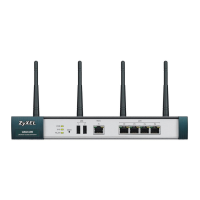


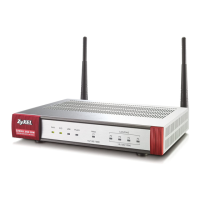
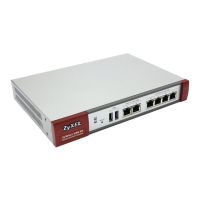

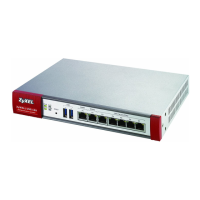

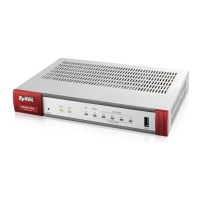
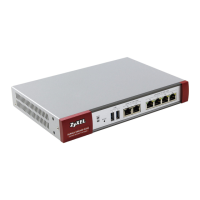

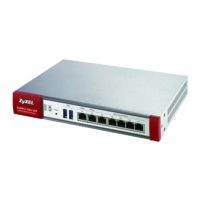
